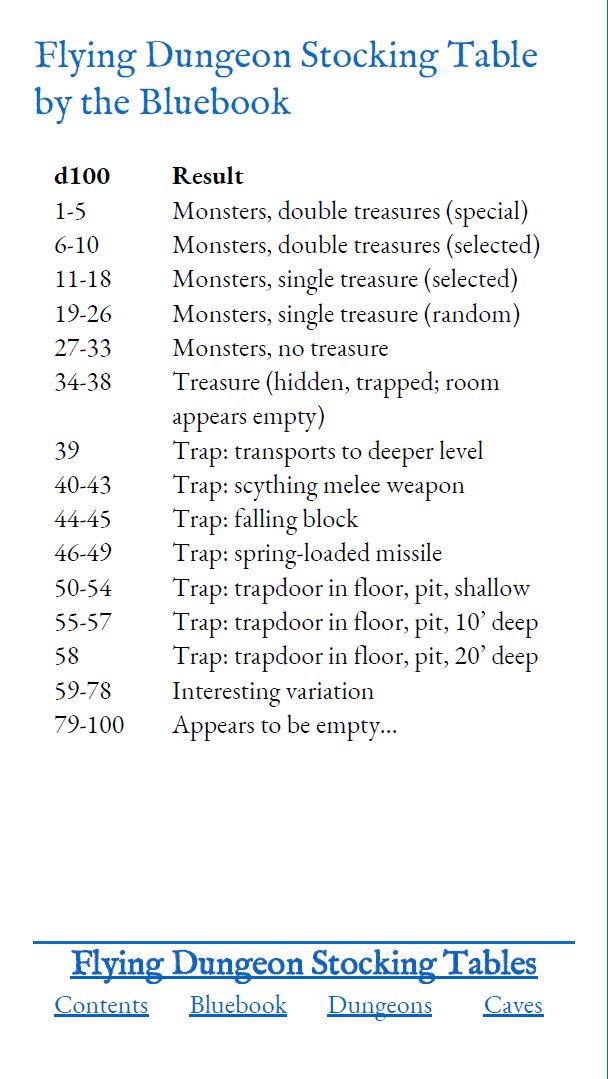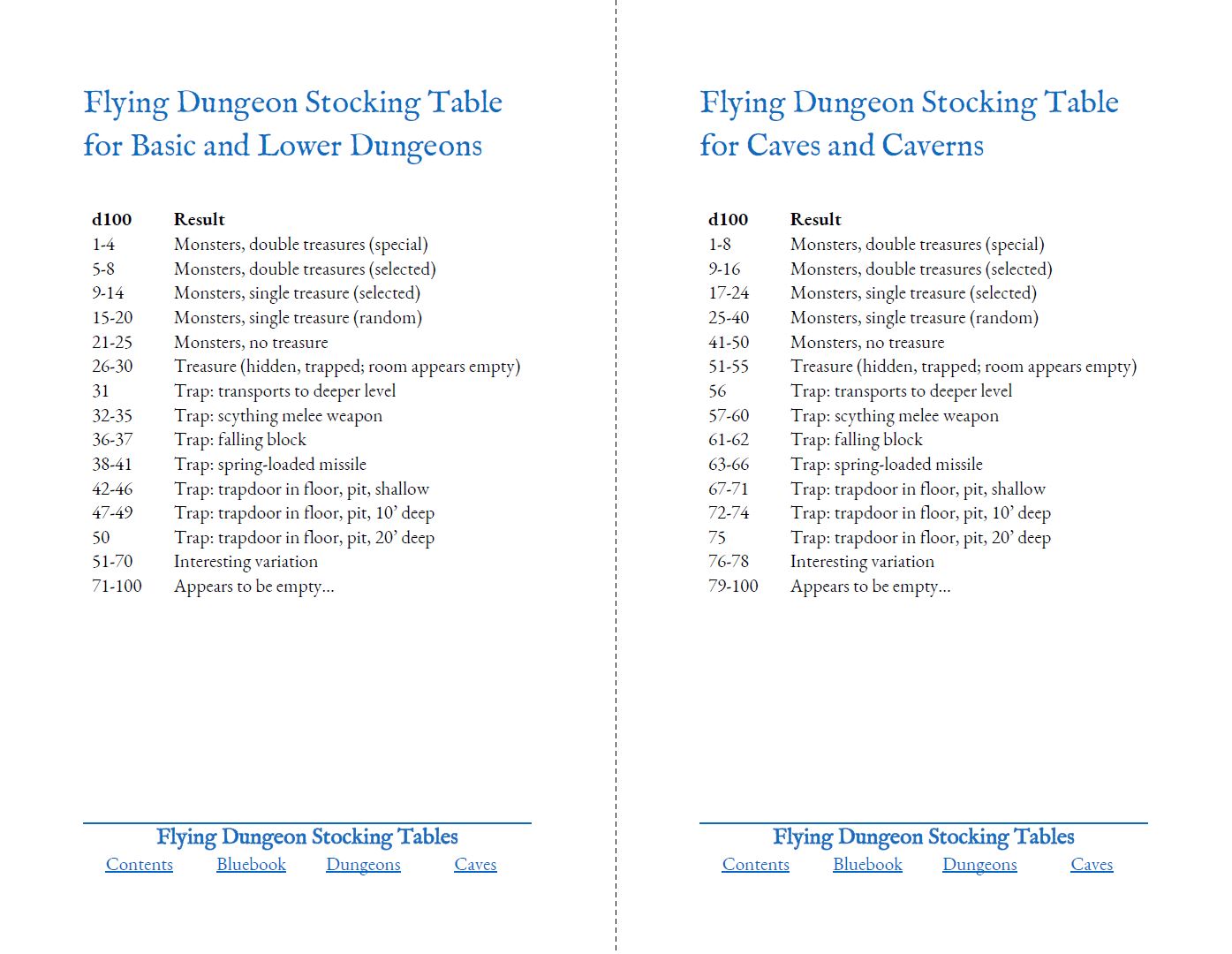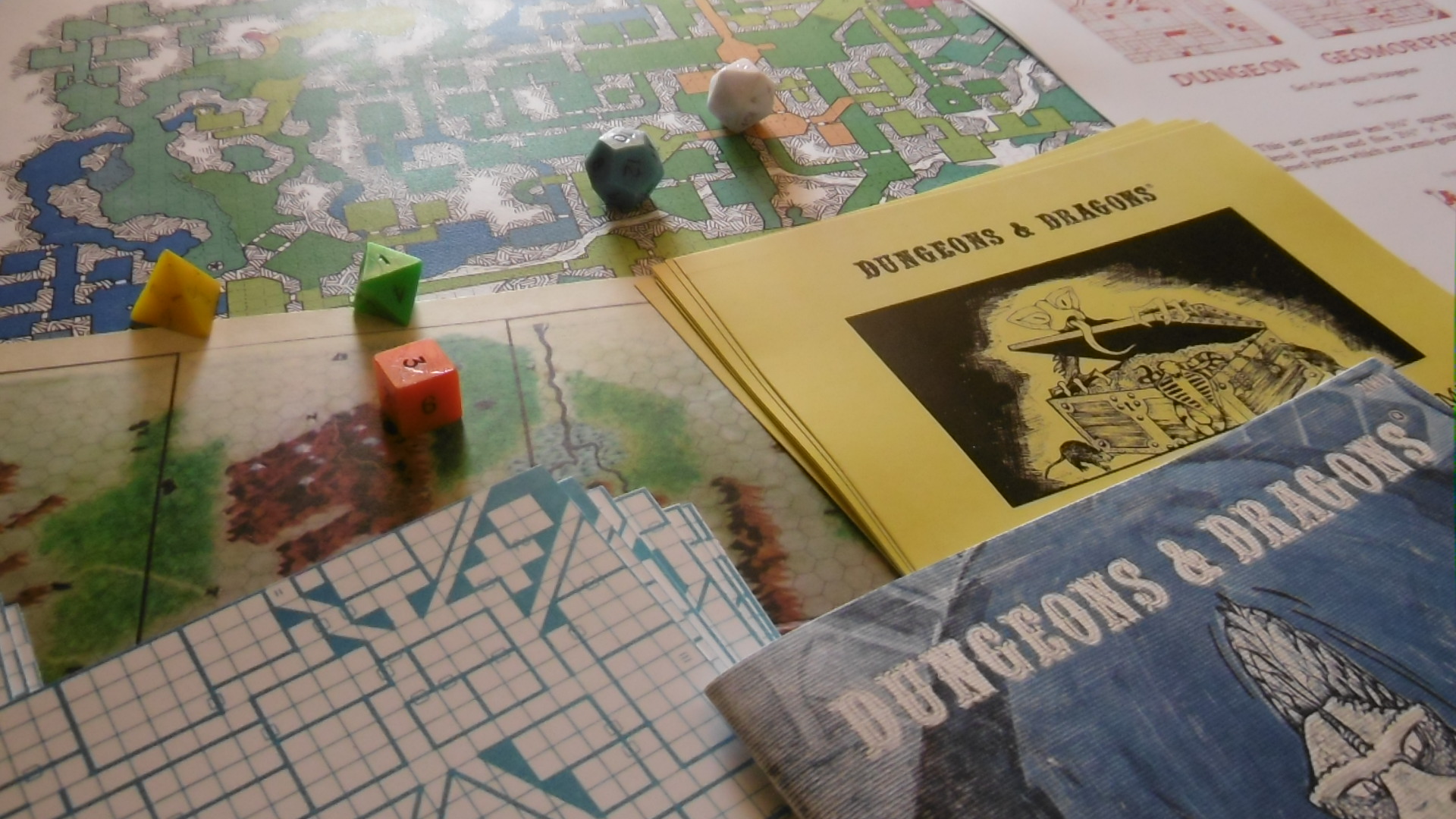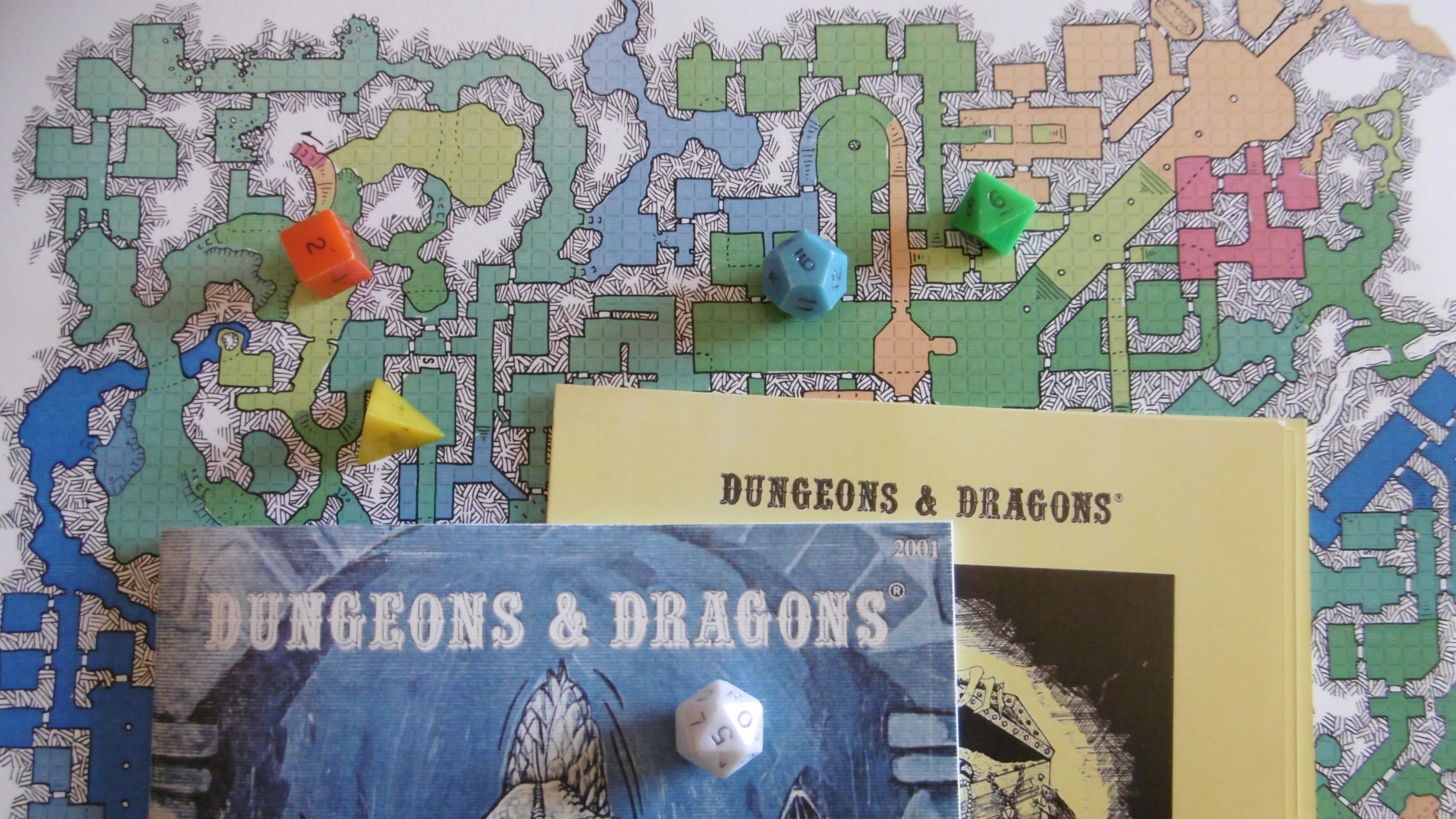Available Hires, Number and Level
The player party visits their local Sword & Board to recruit NPCs for the next adventure. How many potential hirelings are present? What class? What level?
DM’s Summary
In this article, I get into lots of details and tables. Here’s the short version.
Number of Hirelings: First decide the frequency of each character class. Fighters might be common, dwarves and elves rare, and all others uncommon. Roll a d12. Divide the result by 2 for common types, 4 for uncommon, and 11 for rare. Drop the fraction.
Level of Hirelings: Roll a dice in size (number of sides) equal to or greater than the PC’s level and a d3. Divide the result of the first dice by the result of the d3, rounding up. In case of a result higher than the PC’s level, re-roll the first dice.
For explanations, examples, and variations, see below.
Number of Hirelings
“Then Hazard tells us how many [hirelings] there are and how much they cost according to his system…”—Phenster, “Regular Entourage: Hirelings and Henchmen”
Phenster doesn’t make much of it, but limiting the number of potential hirelings represents a cost of failure in Hazard’s system. In an inn full of unlimited potential hires, a candidate’s refusal has no significant consequences, and hirelings are a boring commodity.
We could use a two-step method, first determining if any hires of a particular class are available, then how many. I prefer to put the steps together in one dice roll, and I have the idea that greater numbers should be less frequent.
Playing with dice, I hit on this method to determine the number of hirelings available of a given class. The basic mechanic is to divide a dice result by a number and drop the fraction. The higher the divisor, the fewer potential hires.
This method is similar to using a larger dice as a smaller dice. To generate a number from 1 to 3, for example, we roll a d6, divide the result by 2, and round up. The only difference is, here, we drop the fraction instead of rounding. The practical effect, evident in the table below, is that we split the chance for the highest number, giving the remainder to zero. The chance for any other result is still the divisor over the dice size.
| Comparison: d3 and d2, Rounding up (Standard) and Dropping the Fraction | ||||
|---|---|---|---|---|
| d6 | Divided by 2 (d3) | Divided by 3 (d2) | ||
| Round Up | Drop Fraction | Round Up | Drop Fraction | |
| 1 | 1 | 0 | 1 | 0 |
| 2 | 1 | 1 | 1 | 0 |
| 3 | 2 | 1 | 1 | 1 |
| 4 | 2 | 2 | 2 | 1 |
| 5 | 3 | 2 | 2 | 1 |
| 6 | 3 | 3 | 2 | 2 |
- Dividing by 2 and dropping the fraction, there’s still a one-third chance for a 1 or 2, but the chance for a 3 is reduced to one-sixth, and there’s a one-sixth chance for a zero.
- Dividing by 3, we split the chance for the highest result, a 2, into three parts, sharing between the 2 (one part or one-sixth) and the zero (two parts).
We’ll see below, the effect is the same with larger dice and greater divisors, but we share the chance between the highest result and zero in more parts. A d12 divided by 6, gives us a 1⁄12 chance for a 2 and 5⁄12 for a zero.
Simple Example
The DM decides that fighters for hire are common at the Green Dragon Inn. Thieves, magic-users, and all halflings are uncommon, and clerics are rare, as are dwarves and elves of any class. To determine the number available, she throws a d6 and divides the result by 2 for common types, 3 for uncommon, and 6 for rare. A table of results looks like this:
| d6 | Common (÷ 2) | Uncommon (÷ 3) | Rare (÷ 6) |
|---|---|---|---|
| 1 | 0 | 0 | 0 |
| 2 | 1 | 0 | 0 |
| 3 | 1 | 1 | 0 |
| 4 | 2 | 1 | 0 |
| 5 | 2 | 1 | 0 |
| 6 | 3 | 2 | 1 |
The table shows that some number of common types are available five in six times. One or two are present one-third of the time, and three only one-sixth. One candidate from the uncommon types is available half the time, and two of them one in six times. While rare types appear only one-sixth of the time, then only a single candidate.
One-sixth, or 16⅔%, may not be considered so rare; we use the term relative to common. For finer granularity, we can use a larger dice. A d12’s 8⅓% gradation makes the rare types sufficiently infrequent while still keeping them in the game. If rare types appear only 1% of the time, for example, it’s hardly worth rolling for it.
A d20, with its 5% gradation, yields a few more potential hires of the common type, while keeping the numbers of uncommon and rare types low.
| d20 | Common | Uncommon | Rare | ||||||||||||||||
|---|---|---|---|---|---|---|---|---|---|---|---|---|---|---|---|---|---|---|---|
| ÷ | 2 | 3 | 4 | 5 | 6 | 7 | 8 | 9 | 10 | 11 | 12 | 13 | 14 | 15 | 16 | 17 | 18 | 19 | 20 |
| 1 | 0 | 0 | 0 | 0 | 0 | 0 | 0 | 0 | 0 | 0 | 0 | 0 | 0 | 0 | 0 | 0 | 0 | 0 | 0 |
| 2 | 1 | 0 | 0 | 0 | 0 | 0 | 0 | 0 | 0 | 0 | 0 | 0 | 0 | 0 | 0 | 0 | 0 | 0 | 0 |
| 3 | 1 | 1 | 0 | 0 | 0 | 0 | 0 | 0 | 0 | 0 | 0 | 0 | 0 | 0 | 0 | 0 | 0 | 0 | 0 |
| 4 | 2 | 1 | 1 | 0 | 0 | 0 | 0 | 0 | 0 | 0 | 0 | 0 | 0 | 0 | 0 | 0 | 0 | 0 | 0 |
| 5 | 2 | 1 | 1 | 1 | 0 | 0 | 0 | 0 | 0 | 0 | 0 | 0 | 0 | 0 | 0 | 0 | 0 | 0 | 0 |
| 6 | 3 | 2 | 1 | 1 | 1 | 0 | 0 | 0 | 0 | 0 | 0 | 0 | 0 | 0 | 0 | 0 | 0 | 0 | 0 |
| 7 | 3 | 2 | 1 | 1 | 1 | 1 | 0 | 0 | 0 | 0 | 0 | 0 | 0 | 0 | 0 | 0 | 0 | 0 | 0 |
| 8 | 4 | 2 | 2 | 1 | 1 | 1 | 1 | 0 | 0 | 0 | 0 | 0 | 0 | 0 | 0 | 0 | 0 | 0 | 0 |
| 9 | 4 | 3 | 2 | 1 | 1 | 1 | 1 | 1 | 0 | 0 | 0 | 0 | 0 | 0 | 0 | 0 | 0 | 0 | 0 |
| 10 | 5 | 3 | 2 | 2 | 1 | 1 | 1 | 1 | 1 | 0 | 0 | 0 | 0 | 0 | 0 | 0 | 0 | 0 | 0 |
| 11 | 5 | 3 | 2 | 2 | 1 | 1 | 1 | 1 | 1 | 1 | 0 | 0 | 0 | 0 | 0 | 0 | 0 | 0 | 0 |
| 12 | 6 | 4 | 3 | 2 | 2 | 1 | 1 | 1 | 1 | 1 | 1 | 0 | 0 | 0 | 0 | 0 | 0 | 0 | 0 |
| 13 | 6 | 4 | 3 | 2 | 2 | 1 | 1 | 1 | 1 | 1 | 1 | 1 | 0 | 0 | 0 | 0 | 0 | 0 | 0 |
| 14 | 7 | 4 | 3 | 2 | 2 | 2 | 1 | 1 | 1 | 1 | 1 | 1 | 1 | 0 | 0 | 0 | 0 | 0 | 0 |
| 15 | 7 | 5 | 3 | 3 | 2 | 2 | 1 | 1 | 1 | 1 | 1 | 1 | 1 | 1 | 0 | 0 | 0 | 0 | 0 |
| 16 | 8 | 5 | 4 | 3 | 2 | 2 | 2 | 1 | 1 | 1 | 1 | 1 | 1 | 1 | 1 | 0 | 0 | 0 | 0 |
| 17 | 8 | 5 | 4 | 3 | 2 | 2 | 2 | 1 | 1 | 1 | 1 | 1 | 1 | 1 | 1 | 1 | 0 | 0 | 0 |
| 18 | 9 | 6 | 4 | 3 | 3 | 2 | 2 | 2 | 1 | 1 | 1 | 1 | 1 | 1 | 1 | 1 | 1 | 0 | 0 |
| 19 | 9 | 6 | 4 | 3 | 3 | 2 | 2 | 2 | 1 | 1 | 1 | 1 | 1 | 1 | 1 | 1 | 1 | 1 | 0 |
| 20 | 10 | 6 | 5 | 4 | 3 | 2 | 2 | 2 | 2 | 1 | 1 | 1 | 1 | 1 | 1 | 1 | 1 | 1 | 1 |
Still, I like the d12 for the purpose. The granularity is enough fine for game purposes, and, depending on the divisor, we get up to six common types. With only a 28% refusal chance on the negotiation table, more than six candidates available might as well be a hundred; no need to roll on the negotiation table. Plus, we get some use out of the dodecahedron.
| d12 Number of Hirelings Available by Class Frequency Divisor | |||||||||||
|---|---|---|---|---|---|---|---|---|---|---|---|
| d12 | Common | Uncommon | Rare | ||||||||
| ÷ | 2 | 3 | 4 | 5 | 6 | 7 | 8 | 9 | 10 | 11 | 12 |
| 1 | 0 | 0 | 0 | 0 | 0 | 0 | 0 | 0 | 0 | 0 | 0 |
| 2 | 1 | 0 | 0 | 0 | 0 | 0 | 0 | 0 | 0 | 0 | 0 |
| 3 | 1 | 1 | 0 | 0 | 0 | 0 | 0 | 0 | 0 | 0 | 0 |
| 4 | 2 | 1 | 1 | 0 | 0 | 0 | 0 | 0 | 0 | 0 | 0 |
| 5 | 2 | 1 | 1 | 1 | 0 | 0 | 0 | 0 | 0 | 0 | 0 |
| 6 | 3 | 2 | 1 | 1 | 1 | 0 | 0 | 0 | 0 | 0 | 0 |
| 7 | 3 | 2 | 1 | 1 | 1 | 1 | 0 | 0 | 0 | 0 | 0 |
| 8 | 4 | 2 | 2 | 1 | 1 | 1 | 1 | 0 | 0 | 0 | 0 |
| 9 | 4 | 3 | 2 | 1 | 1 | 1 | 1 | 1 | 0 | 0 | 0 |
| 10 | 5 | 3 | 2 | 2 | 1 | 1 | 1 | 1 | 1 | 0 | 0 |
| 11 | 5 | 3 | 2 | 2 | 1 | 1 | 1 | 1 | 1 | 1 | 0 |
| 12 | 6 | 4 | 3 | 2 | 2 | 1 | 1 | 1 | 1 | 1 | 1 |
In the table above, I place arbitrary categories on the divisors based on their maximum results. One might consider a divisor of 6 as rare, allowing 2 of the rare types 8⅓% of the time. The DM can select a divisor for each category as seems fit, even changing the divisor to suit current conditions (as in wartime or when a demon horde is on the rampage). For example, I like a divisor of 2 for common types, 4 for uncommon, and 11 rare. We might say men-at-arms (0-level) are twice as numerous as fighters and roll twice on the common column.
| d12 | Common (÷ 2) | Uncommon (÷ 4) | Rare (÷ 11) |
|---|---|---|---|
| 1 | 0 | 0 | 0 |
| 2 | 1 | 0 | 0 |
| 3 | 1 | 0 | 0 |
| 4 | 2 | 1 | 0 |
| 5 | 2 | 1 | 0 |
| 6 | 3 | 1 | 0 |
| 7 | 3 | 1 | 0 |
| 8 | 4 | 2 | 0 |
| 9 | 4 | 2 | 0 |
| 10 | 5 | 2 | 0 |
| 11 | 5 | 2 | 1 |
| 12 | 6 | 3 | 1 |
| Common: fighters, men-at-arms (roll twice) Uncommon: magic-users, thieves, halflings Rare: clerics, dwarves, elves | |||
Hireling Level Determination
Phenster suggests, by the method to determine hireling cost based on experience required for their level, that those of 2nd and higher levels might be seeking work at the Nine of Pentacles. He does not, however, provide a method for determining the level.
The simplest method to determine hireling level is, of course, to roll a dice the size of the highest possible level (the hiring PC’s level). This gives us an even chance for each level. But, like greater numbers of candidates, I have the idea that higher-level NPCs seeking employment are less frequent.
To skew the results toward lower levels, roll the level using an equal distribution as in the previous paragraph, then divide the result by the results of a second dice, rounding up. Taking the d8 (8th-level PCs) as an example, we see in the table below that dividing by a d2 splits the first dice in half, giving equal distributions in the low and high results. Dividing by a d3 or a d4 yields some variation in the lower middle results (3 and 4 on the d8) but the same equal distribution for the lowest results and the upper half.
| d8 | ÷ d2 | ÷ d3 | ÷ d4 | ÷ d6 |
|---|---|---|---|---|
| 1 | 18.75% | 25.00% | 31.25% | 43.75% |
| 2 | 18.75% | 25.00% | 31.25% | 31.25% |
| 3 | 18.75% | 20.83% | 15.63% | 10.42% |
| 4 | 18.75% | 12.50% | 9.38% | 6.25% |
| 5 | 6.25% | 4.17% | 3.13% | 2.08% |
| 6 | 6.25% | 4.17% | 3.13% | 2.08% |
| 7 | 6.25% | 4.17% | 3.13% | 2.08% |
| 8 | 6.25% | 4.17% | 3.13% | 2.08% |
The small percentage equally distributed for higher-level hirelings feels appropriate. I do want some variation in the lower levels, which leaves the d2 aside. The larger the divisor (second) dice, the greater the percentage for lower-level hirelings and lesser for higher levels. I like the d3 for the greater (though small) chance for higher-level results, but it requires (unless one is armed with a d6 numbered 1 to 3 twice) an additional mental step to derive the d3 results from a d6 roll. For this reason, while its higher results are less likely, the d4 is attractive. I give tables of results for both. Let the DM decide.
| Determine Hireling Level (÷ d3) | ||||||||||
|---|---|---|---|---|---|---|---|---|---|---|
| PC Level | ||||||||||
| NPC Level | 2nd | 3rd | 4th | 5th | 6th | 8th | 10th | 12th | 16th | 20th |
| 1 | 83.33% | 66.67% | 50.00% | 40.00% | 33.33% | 25.00% | 20.00% | 16.67% | 12.50% | 10.00% |
| 2 | 16.67% | 22.22% | 33.33% | 33.33% | 33.33% | 25.00% | 20.00% | 16.67% | 12.50% | 10.00% |
| 3 | 11.11% | 8.33% | 13.33% | 16.67% | 20.83% | 20.00% | 16.67% | 12.50% | 10.00% | |
| 4 | 8.33% | 6.67% | 5.56% | 12.50% | 13.33% | 16.67% | 12.50% | 10.00% | ||
| 5 | 6.67% | 5.56% | 4.17% | 10.00% | 8.33% | 12.50% | 10.00% | |||
| 6 | 5.56% | 4.17% | 3.33% | 8.33% | 8.33% | 10.00% | ||||
| 7 | 4.17% | 3.33% | 2.78% | 6.25% | 8.33% | |||||
| 8 | 4.17% | 3.33% | 2.78% | 6.25% | 5.00% | |||||
| 9 | 3.33% | 2.78% | 2.08% | 5.00% | ||||||
| 10 | 3.33% | 2.78% | 2.08% | 5.00% | ||||||
| 11 | 2.78% | 2.08% | 1.67% | |||||||
| 12 | 2.78% | 2.08% | 1.67% | |||||||
| 13 | 2.08% | 1.67% | ||||||||
| 14 | 2.08% | 1.67% | ||||||||
| 15 | 2.08% | 1.67% | ||||||||
| 16 | 2.08% | 1.67% | ||||||||
| 17 | 1.67% | |||||||||
| 18 | 1.67% | |||||||||
| 19 | 1.67% | |||||||||
| 20 | 1.67% | |||||||||
| Determine Hireling Level (÷ d4) | ||||||||||
|---|---|---|---|---|---|---|---|---|---|---|
| PC Level | ||||||||||
| NPC Level | 2nd | 3rd | 4th | 5th | 6th | 8th | 10th | 12th | 16th | 20th |
| 1 | 87.50% | 75.00% | 62.50% | 50.00% | 41.67% | 31.25% | 25.00% | 20.83% | 15.63% | 12.50% |
| 2 | 12.50% | 16.67% | 25.00% | 30.00% | 33.33% | 31.25% | 25.00% | 20.83% | 15.63% | 12.50% |
| 3 | 8.33% | 6.25% | 10.00% | 12.50% | 15.63% | 20.00% | 20.83% | 15.63% | 12.50% | |
| 4 | 6.25% | 5.00% | 4.17% | 9.38% | 10.00% | 12.50% | 15.63% | 12.50% | ||
| 5 | 5.00% | 4.17% | 3.13% | 7.50% | 6.25% | 9.38% | 12.50% | |||
| 6 | 4.17% | 3.13% | 2.50% | 6.25% | 6.25% | 7.50% | ||||
| 7 | 3.13% | 2.50% | 2.08% | 4.69% | 6.25% | |||||
| 8 | 3.13% | 2.50% | 2.08% | 4.69% | 3.75% | |||||
| 9 | 2.50% | 2.08% | 1.56% | 3.75% | ||||||
| 10 | 2.50% | 2.08% | 1.56% | 3.75% | ||||||
| 11 | 2.08% | 1.56% | 1.25% | |||||||
| 12 | 2.08% | 1.56% | 1.25% | |||||||
| 13 | 1.56% | 1.25% | ||||||||
| 14 | 1.56% | 1.25% | ||||||||
| 15 | 1.56% | 1.25% | ||||||||
| 16 | 1.56% | 1.25% | ||||||||
| 17 | 1.25% | |||||||||
| 18 | 1.25% | |||||||||
| 19 | 1.25% | |||||||||
| 20 | 1.25% | |||||||||
Pandemonium Society characters reached levels around 13th. I include 20th level because we have a dice for it.
At levels for which no dice matches (7, 11, 13, 14, 17, 19), use the next higher dice. On any result above the PC’s level, re-roll the first dice—not the divisor dice (d3 or d4). A d16 is achieved by rolling any dice plus a d8. An even result on the first dice adds 8 to the d8 results. Ignore the first dice’s odd results. In the same way, we can make a d9 (with a pair of d3s), d15 (d5, d3), and a d18 (d6, d3).



